Discovering a Japanese master: Tai Katô
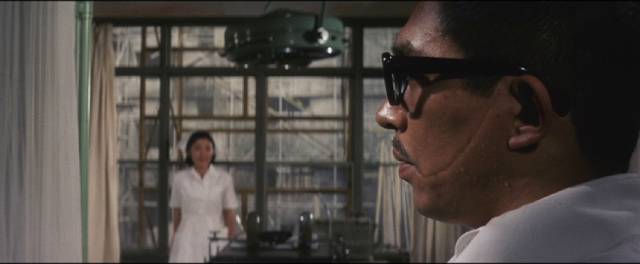
I’ve had an interest in Japanese film for a long time, but I’m occasionally reminded that despite all the movies I’ve seen in multiple genres, there are large gaps in my experience. Yet it still comes as a surprise to discover a “new” director who worked in areas of particular interest to me. I don’t think I’d even heard the name of Tai Katô until a recent flurry of disk releases – from Radiance and Film Movement – and yet he was a contemporary of Akira Kurosawa, starting as an assistant director at Toho in the late ’30s, making documentaries in Manchuria in the last years of the war, and joining Daiei after returning to Japan. Among other things, he was Kurosawa’s assistant on Rashomon (1950), though he was subsequently fired by the studio for his leftist politics, and went on to make his directorial debut in 1951 for Shin Toho. He specialized in samurai films for the next decade before segueing to yakuza movies in the early ’60s. Over a three-and-a-half decade career, he directed more than forty features and wrote several dozen screenplays, but somehow this is the first I’ve heard of him – the older I get the more apparent it is how little I actually know!
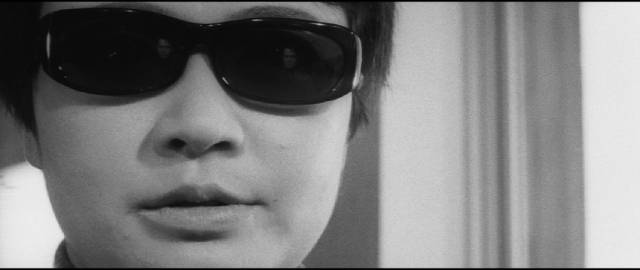
Of the five Tai Katô movies I’ve recently acquired, I’ve now watched four (the fifth is the third feature in Film Movement’s Red Peony Gambler set, which I haven’t tackled yet). On the basis of these, Katô is a fascinating figure with a distinctive visual style who has a complicated moral perspective on post-war Japan – three of these films helped to lay the groundwork for Kinji Fukasaku’s aggressive deconstruction of Japan’s post-war recovery in the context of the yakuza genre just a few years later.
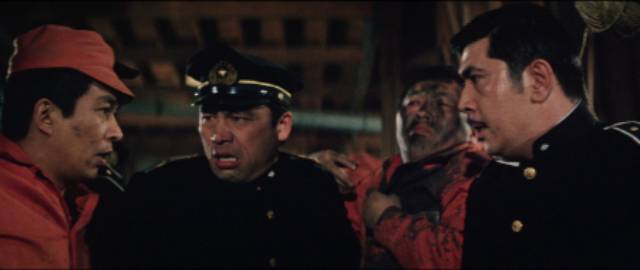
If anything, that comment indicates that my knowledge and understanding of the period comes almost entirely from movies, so certain elements of Katô’s films are familiar, while others expand the picture I’ve formed of Japan’s struggle to reconstruct itself in opposition to its recent fascist-imperialist history. The deep indoctrination of society, rooted in a history shaped by stark social stratification and the codes which enforced those inequalities, inevitably found new expressions after the trauma of defeat and the post-war occupation by U.S. forces which imposed new political ideas while engendering strong resentments against the humiliation of losing the war. Within the newly instituted structures of democracy, those struggling to survive formed gangs which assumed a crude simulacrum of the feudal order, with yakuza a kind of debased samurai class whose influence permeated the new political and economic system, while as in the past victimizing those at the lower end of the social order. At the root of the economic recovery was a flourishing black market which would evolve into businesses rife with corruption.
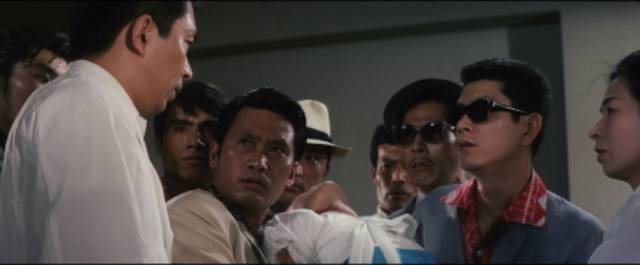
All of this, dealt with in detail by Fukasaku in his epic Battles Without Honor and Humanity (1973-74), can be seen in Katô’s By a Man’s Face Shall You Know Him (1966) and Eighteen Years in Prison (1967), but he complicates the former with another layer; one of the violent gangs is made up of stateless Koreans, a remnant of Japan’s imperial past. Korea had been under Japan’s colonial control from 1910 until the end of the war, exploiting and abusing the population as empires tend to do, and abandoning their former subjects when it was all over. Koreans living in the Japanese mainland were never given the status of citizens, even those who were drafted into the army and fought in the war. Still viewed with contempt in the post-war years, these Koreans were fuelled by a deep-seated anger and resentment which were given free-rein under the occupation which suppressed Japanese civil society. This conflict is at the core of By a Man’s Face Shall You Know Him.
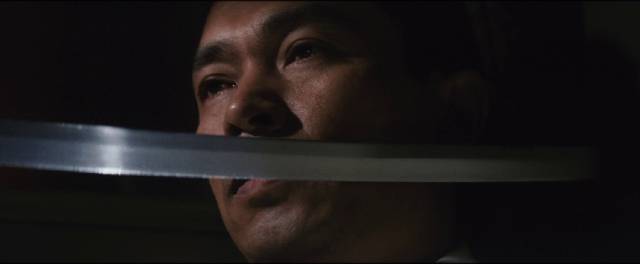
While the Koreans serve as the story’s villains, the roots of their anger and violence in their former oppression complicate the viewer’s response to them, investing them with some sympathy in parallel with the empathy afforded to the disenfranchised Japanese who are largely unprotected by the occupation authorities – those authorities emphasize the victimization of both factions in the film’s central conflict, eventually leading to a plea for some kind of solidarity between the poor Japanese and the outlaw Koreans.
The movie has a non-linear structure, shifting between the late-’40s and early ’60s as it tells the story of a Japanese officer, Dr. Amamiya (former yakuza Noboru Andô), who serves a struggling, impoverished community, and Choi (Ichiro Nakatani), a Korean-born man who served under him during the war, then embraced his Korean heritage in the aftermath. Things are complicated by Amamiya’s brother Shunji (Jûzô Itami, future director of Tampopo and other movies) and a Korean woman named Gye Hye-chun (Akemi Mari). Amamiya is a humanist who rejects social and cultural differences and attempts to mitigate the multiple conflicts surging around him.
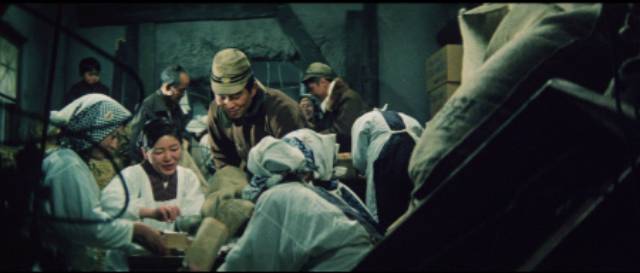
Andô plays a similar character in Eighteen Years in Prison; Kawada is a soldier trying to help another impoverished community in the aftermath of the war. Here though, he engages in what the authorities would consider criminal activities. To help people who live by selling in a small unofficial market, he hijacks trucks and distributes food and other goods. During one raid, he and his partner Tsukada (Asao Koike) are pinned down by the police and Kawada insists that the wounded Tsukada escape while he holds off the cops. Sentenced to prison, Kawada asks Tsukada to continue his work and help the people with their market. Unfortunately, Tsukada lacks his selflessness and kicks the poor people off the land to set up brothels and gambling joints. Kawada only finds out what’s happened when an elderly woman commits suicide in despair.
When he gets out, Kawada goes against the now wealthy gang boss Tsukada and sets out to rout the gang and reestablish the community. In both films, Katô has a moral protagonist who strives to establish peace among the various factions cast adrift in the social and political chaos left by Japan’s defeat – a character type not seen in Fukasaku’s movies, which depict a more primal struggle among scavengers fighting for control in the vacuum left by the collapse of imperial Japan.
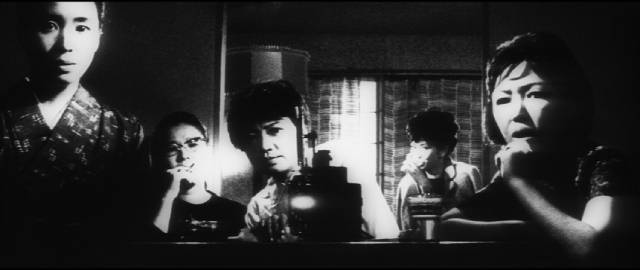
The moral bankruptcy of what arose during this period is at the heart of I, the Executioner (1968), made right after Eighteen Years in Prison. Beginning with a shocking murder, it follows the police investigation as the killer brutally kills a series of middle-class women, eventually revealing his motive; these women, bored and jaded, their newfound prosperity giving them nothing beyond material comfort, amused themselves one day as they watched some porn by taunting and raping a young, naive delivery boy. Unable to live with the humiliation, the boy threw himself off a roof. While no one else took much notice, a construction worker named Kawashima (Makoto Satô) who knew the boy seeks out the women and punishes them for their callous crime. There’s a strong suggestion of homoerotic attraction between the man and the boy, whom he saw as pure and innocent until fatally soiled by these women.
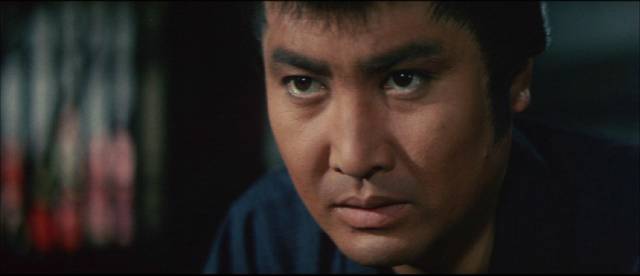
Made immediately after By a Man’s Face Shall You Know Him, Tokijiro: Lone Yakuza (1966) is a period film which depicts the consequences of a society bound by rigid rules of conduct, though rather than the bushido code of the samurai class, here it’s the obligations of gamblers and criminals. Tokijiro (Kinnosuke Nakamura) is a master swordsman who wanders from place to place, making money by gambling (not unlike Zatoichi); because of the yakuza code, he’s honour-bound to offer his services to his hosts in exchange for their hospitality. But when the owner of a brothel suggests he might take care of a gang who are trying to take over her establishment, he ignores her polite, indirect suggestion, and travels on. His sidekick, a chatty farmer with ambitions to become a swordsman himself (something like the Toshirô Mifune character in Seven Samurai [1954]), is offended by this and tries to fulfill the request himself, dying in the process. Angry, Tokijiro slaughters the rival gang – not out of his obligation for the hospitality, but for personal revenge.
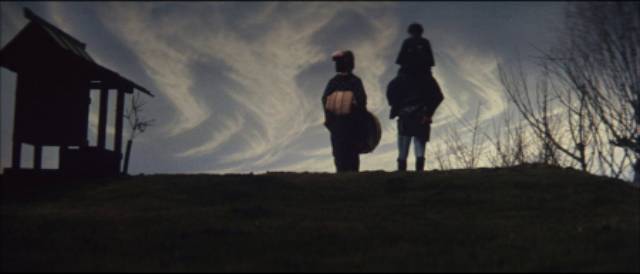
On his way again, he meets a woman and her young son on a ferry, and travels with them a while, enjoying the intimacy of an imagined family life until they have to part ways. At his next stop, his host tasks him with killing a troublesome man, the last of a rival clan. Both he and his target subscribe to the same code and fight an honourable duel. As the other man lies dying, a couple of the host’s men rush in to finish the job, but Tokijiro fights them off, immediately earning the enmity of the host. To make matters worse, he discovers that the man he has killed was the husband of the woman from the ferry – and now the host’s men are coming to finish off the family.
Assuming responsibility for the widow and the boy, Tokijiro escorts them away, fighting off those sent to kill her … and him, for having violated those rules of hospitality. Although he and Okinu (Junko Ikeuchi) are initially uneasy companions – after all, he did kill her husband – unexpected feelings are gradually awoken and for a while he again experiences that sense of family and belonging, though inevitably it can’t last. Although existing in a world where harsh rules govern behaviour, Tokijiro strives to live by his own code of honour which is at odds with those he moves among. His brief time with Okinu and her son allows him to experience something different and more decent.
*
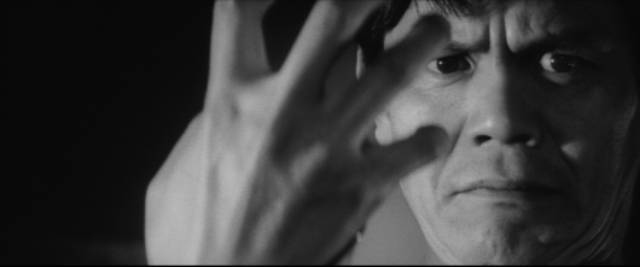
Though I’ve mentioned some connections between Katô and Fukasaku in terms of material and historical perspective, there’s a significant difference in terms of style and tone. Unlike Fukasaku’s raw brutality, embodied in his intense, up-close, hand-held style, Katô’s films have a classical formalism more akin to Yasujirô Ozu and Mikio Naruse, with the camera set quite low, looking up at the characters, and the frame locked off so that the action is viewed with a certain contemplative detachment. Rather than throwing the viewer into the midst of that action, it invites a consideration of the human cost of the events which shape and disrupt these characters’ lives; in all of these films, essentially decent people seek ways to reconcile differences and create a space where the characters might live more harmoniously with one another.
Both Eighteen Years in Prison and Tokijiro: Lone Yakuza get excellent treatment from Radiance, with visual essays and critical interviews; the other two films have also been released by Radiance, but I watched them on a two-disk set from Film Movement with similar extras. Judging by these movies, there’s obviously more to explore from this previously unknown (to me) Japanese master.
*
Speaking of Japanese masters: Masahiro Shinoda died on March 25th at the age of 94. Beginning as an assistant director at Shochiku in 1953 (notably working with Yasujirô Ozu on Tokyo Twilight [1957]), he began directing himself in 1960, making almost three-dozen features in forty-plus years (he made his final film in 2003, in his early seventies). An important figure in the Japanese New Wave of the ’60s, he was notable for the range of subjects and styles which make his body of work one of the most eclectic among his contemporaries. This variety also makes him a little harder to pin down as an auteur.
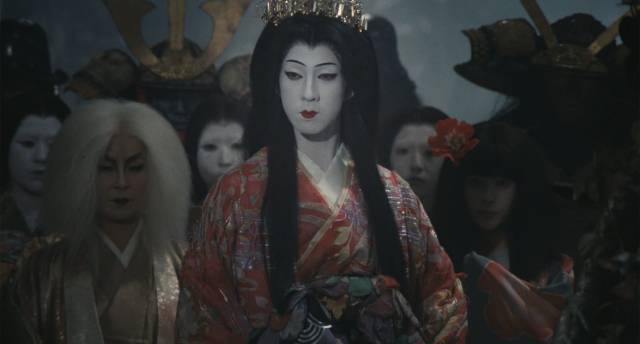
I’m not in a position to offer any definitive comments because I’ve actually only seen a handful of his films, but even among these few, the range is remarkable. Pale Flower (1964) is regarded as one of the pinnacles of the romantic outlaw movies which transposed the samurai code of honour to the postwar gangs of the yakuza genre. This was immediately followed by Assassination (1964), one of several complex and dark period films in which individuals are caught up in political struggles which challenge their personal sense of morality, a theme further explored in Samurai Spy (1965). Silence (1971) – unnecessarily remade by Martin Scorsese in 2016 – deals with the attempt of Portuguese Jesuits to introduce Christianity into 17th Century Japan, a society completely alien to European interests.
While the latter three are rigorous historical narratives, the other two films I’m familiar with draw on traditional Japanese theatre and folktales. Double Suicide (1969), adapted from a famous Bunraku puppet play, discards realism to deepen its thematic implications by having “puppeteers” manipulate the actors, reinforcing the idea that the characters are helplessly trapped by the social forces which make self-determination impossible. Demon Pond (1979), on the other hand, plunges into colourful fantasy to depict a world where humans live alongside Yokai, spirits which permeate and animate the physical world, influencing human lives.
Among the many films by Shinoda which I haven’t seen are several which draw on his own childhood during the war and the ensuing years of Japan’s social and political transformation after defeat. There’s obviously also a lot more here to explore.
Comments